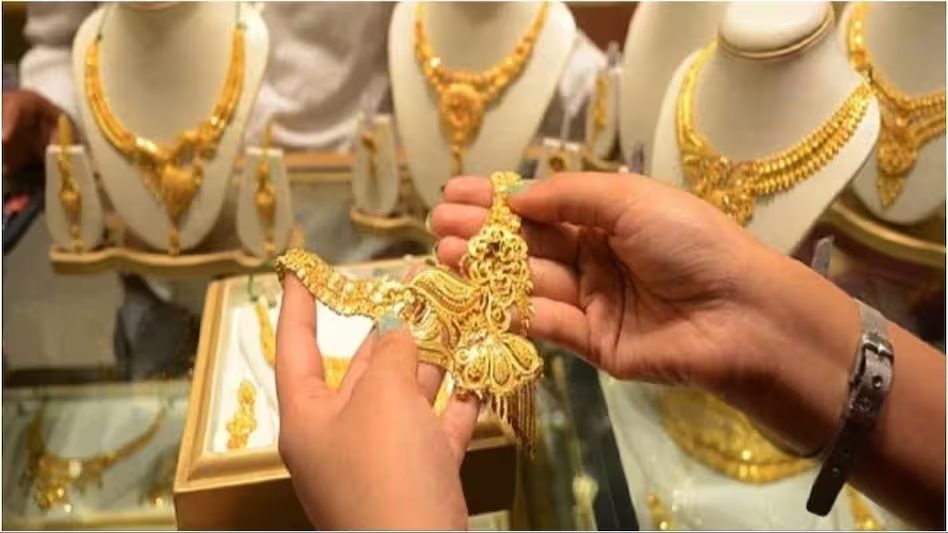Every year, on the day when spring is at its sweetest and summer comes knocking, Indians celebrate Akshaya Tritiya—a day of unending prosperity. Considered one of the most auspicious days in the Hindu calendar, it is believed that anything that is brought home that day will only grow in value. Jewellery stores and gold markets across the country thrum with the promise of new beginnings. While Dhanteras (around Diwali) is another gold-buying favourite, Akshaya Tritiya holds a quieter, more spiritual charm. “Akshaya” means eternal, never diminishing—making it the perfect day to start a new venture, get married, or invest in gold!
India’s love affair with gold is not just about the culture. Gold is offered at weddings, festivals, and temple altars. It is considered both an adornment and investment. Today, Indian women are said to hold nearly 11% of the world’s gold reserves—more than the reserves of the US, IMF, or Germany! That’s not just wealth. It’s trust, heritage, and pride that is handed down from one generation of women to the next.
Markets that Dazzle with Tradition
If you are in India around Akshay Tritiya, you can’t escape the celebratory air and the jewellery stores bedecked like a new bride, with shining wares calling out to you. Stores also offer some discounts or free gifts to each customer on this day. If you wish to experience buying gold like a local, head to the gold markets of India—no two are the same.
In Mumbai’s Zaveri Bazaar, the energy is electric. This is the heart of India’s gold trade, and home to jewellers like Tribhovandas Bhimji Zaveri (TBZ) and Dwarkadas Chandumal, two of the oldest and most trusted jewelers in India. Here, kundan sets and bridal chokers are crafted like fine art. Whether you’re picking up a simple pair of gold studs or commissioning a bespoke necklace, you can be assured of timeless appeal that only experience can bring.
In Chennai’s T. Nagar, rows of stores light up Ranganathan Street. In South India, gold is revered and worshipped. And if there ever was statement gold jewellery, it has to be temple jewellery. Talented craftsmen carve intricate idols of Gods and Goddesses on necklaces, earrings, and bracelets that can make you feel like you’re wearing years of tradition. Visit GRT Jewellers or NAC, known for their South Indian temple-inspired designs to get your hands on some awe-inspiring pieces.
And then there’s Bowbazar in Kolkata, where master artisans have spent years perfecting the art of delicate filigree-work gold jewellery. Gold jewellery in Bengal tends to be lighter and the designs favor flora and fauna. P.C. Chandra and Senco Gold & Diamonds are names you’ll hear again and again. Their jewellery reflects the finesse of Bengal’s craft, whether it’s an engraved bangle with clasps fashioned into a pair of fish or a minimalist lotus pendant.
A Union of Old and New
If you’re looking for a fresh take on tradition, you’ll find some modern studios that are refreshing people’s ideas of Indian gold jewellery.
Design houses like Amrapali and designers like Sunita Shekhawat are showcasing the lesser-known styles and designs from across India. Amrapali, for example, fuses Indian tribal and traditional designs to create uniquely memorable pieces that are more like conversation starters than adornments.
Whether you’re shopping for a statement piece or a tiny trinket, no better day than Akshay Tritiya and no better way than Mony to buy the perfect keepsake to remember India by.


[…] On Akshaya Tritiya, one of the most auspicious days in the Hindu calendar, India’s love affair with gold shines brightest. Whether you find yourself in Mumbai’s bustling Zaveri Bazaar, Chennai’s traditional T. Nagar, or Kolkata’s artistic Bowbazar, buying gold here is as much about heritage as it is about beauty. Embrace a timeless tradition that symbolizes prosperity and enduring love.👉 Read More about Buying Gold in India […]
Akshaya Tritiya truly inspires gold shopping in India. If anyone is planning to invest in timeless jewellery this festive season, do explore Jaipur Gems’ curated gold collection: Jaipur Gems Gold Jewellery. ✨💛
Couldn’t agree more — gold and Jaipur Gems go hand in hand this season!